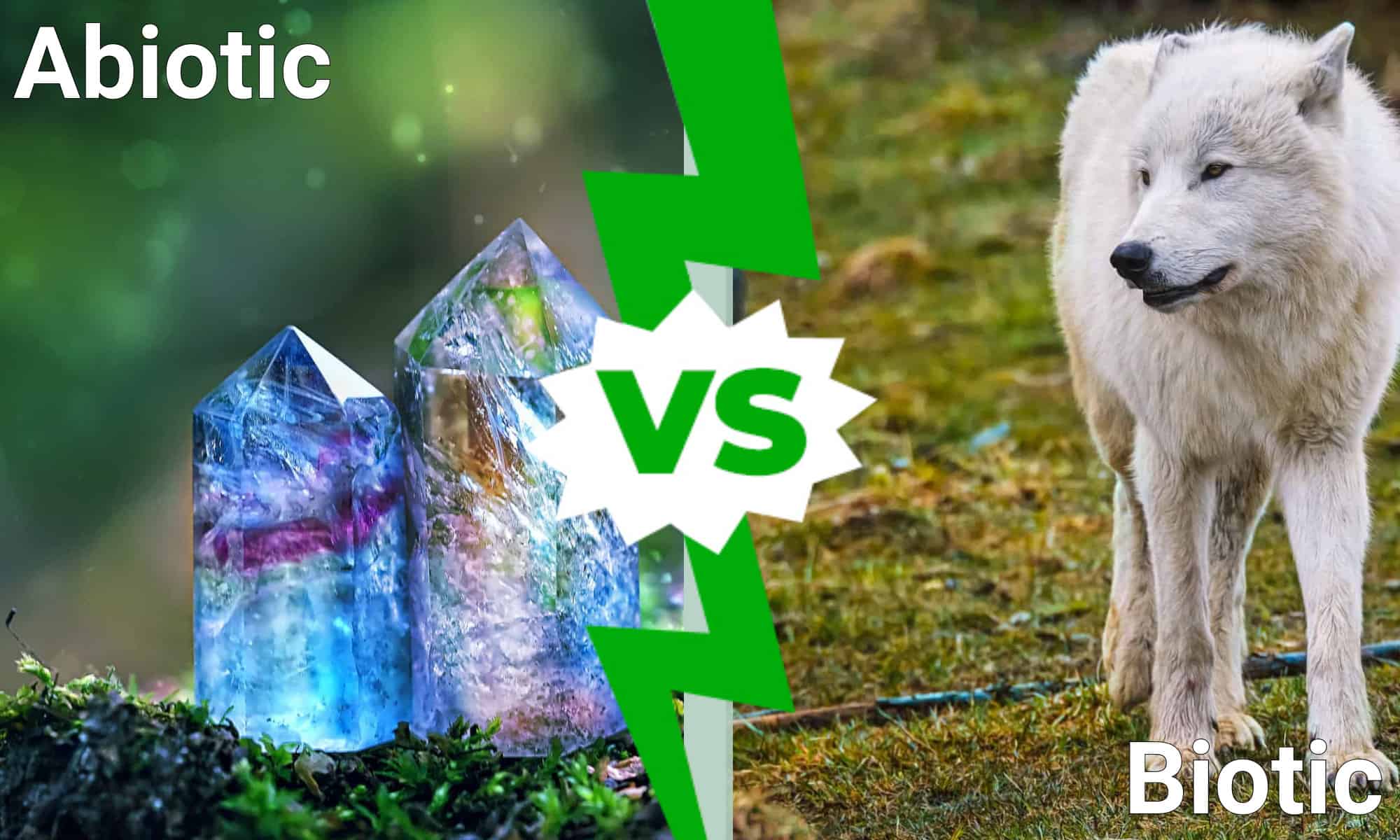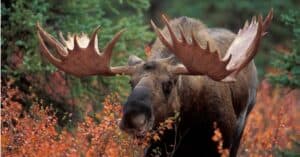Two essential factors responsible for shaping ecosystems, biotic and abiotic are valuable terms for understanding our amazing world. When you hear words with the prefix or suffix of “bio”, most often you think of “life.” A person’s “bio” is their life story. Biology is the study of life. The prefix in this case pertains, as you suspect, to life. In fact, biotic comes from the Greek “biotikos” which means “pertaining to life”. The more familiar term “bios” literally just means life. The suffix of the words “ic” simply means “like” as in “life-like.”
So, let’s take a look at the terms abiotic vs. biotic to understand what they mean, how they differ, and how they impact our understanding of the world.
| Abiotic Vs. Biotic | Abiotic Factors | Biotic Factors |
|---|---|---|
| Living organisms | No | Yes |
| Examples | Water, climate, soil, oxygen minerals, forest fires, mud slides, sunlight, pollution, weather | Plants, animals, insects, fungi, humans |
| Main categories | Climatic, Edaphic, Social | Autotrophs, Detritivores, Hetertrophs |
| Main types | Physical and chemical things | Living things |
What Does Biotic Mean?
The term biotic refers to living organisms. Biotic factors, in turn, refer to living or formerly living organisms in an ecosystem. Biotic components factors refer to organisms capable of reproduction. Some examples of biotic components include plants, fungi, birds, fish, insects, animals, humans, and other living organisms. The presence and byproducts of biotic organisms are necessary components of fulfilling the essentials for life and food for others within the ecosystem.
Biotic factors affect other organisms in their ecosystems via such means as consumption (insects consume other biotic factors by eating them).
Types of Biotic Factors

Arctic Wolves are an example of adaptable biotic organisms that suit themselves to extreme environments when needed.
©Ondrej Chvatal/Shutterstock.com
Simply stated, biotic factors are living organisms and the food of those organisms. Three categories, or types, of biotic factors exist: autotrophs, detritivores, and heterotrophs.
Autotrophs
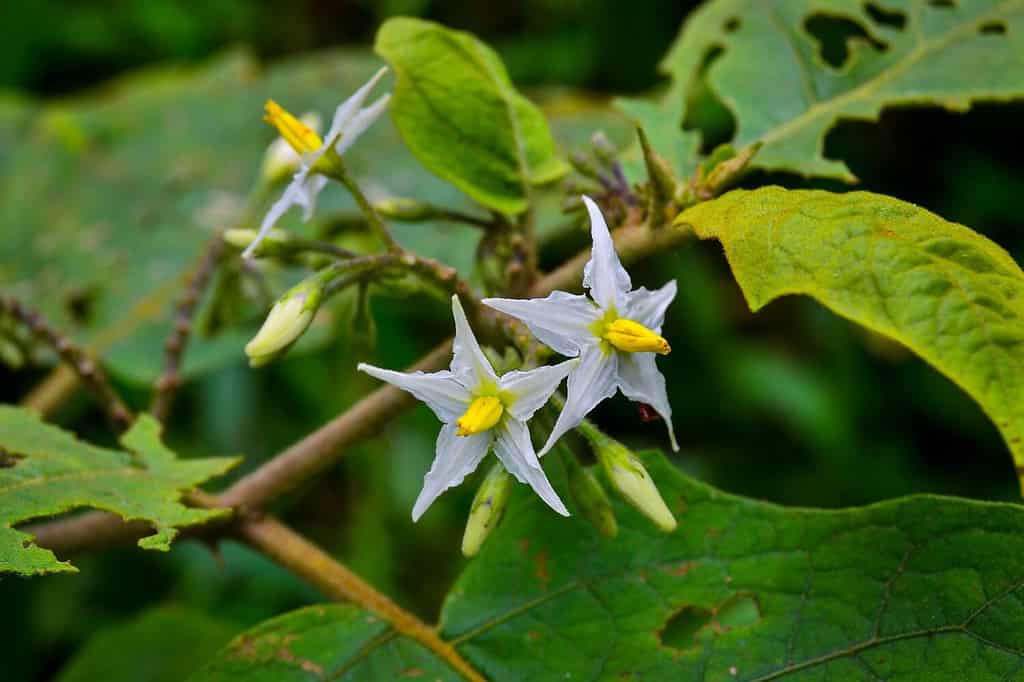
Plants are among the “autofeeders” of the world, producing without consuming components of the environment needed by consumers to survive.
©AsepSur/Shutterstock.com
Meaning “auto-feeder,” the term autotroph applies to the living organisms that are considered producers in an ecosystem. These may include plants and algae. Using the process of photosynthesis, these are the organisms that make their own food using strictly abiotic components. In other words, autotrophs do not consume foods but rather put into the ecosystem foods and abiotic components for other living organisms to consume. Plants and algae both store energy for themselves as food for decomposers and consumers.
Some autotrophs that don’t use photosynthesis also exist. These organisms use a process known as chemosynthesis, meaning they take organic material from the environment and convert them into organic nutrients without the use of sunlight to power the process. Certain bacteria, for example, fall into this category. These live hydrothermal vents in the ocean (openings in the sea floor which pour out heated, mineral-rich water). By extracting abiotic elements like hydrogen sulfide from the water, they produce organic nutrients that other living organisms may eat.
These autotrophs are the base or foundation of the entire ecosystem. Their use of simple food sources means they are producers, not consumers, and they provide the ability for the whole system to live because of it.
Detritivores
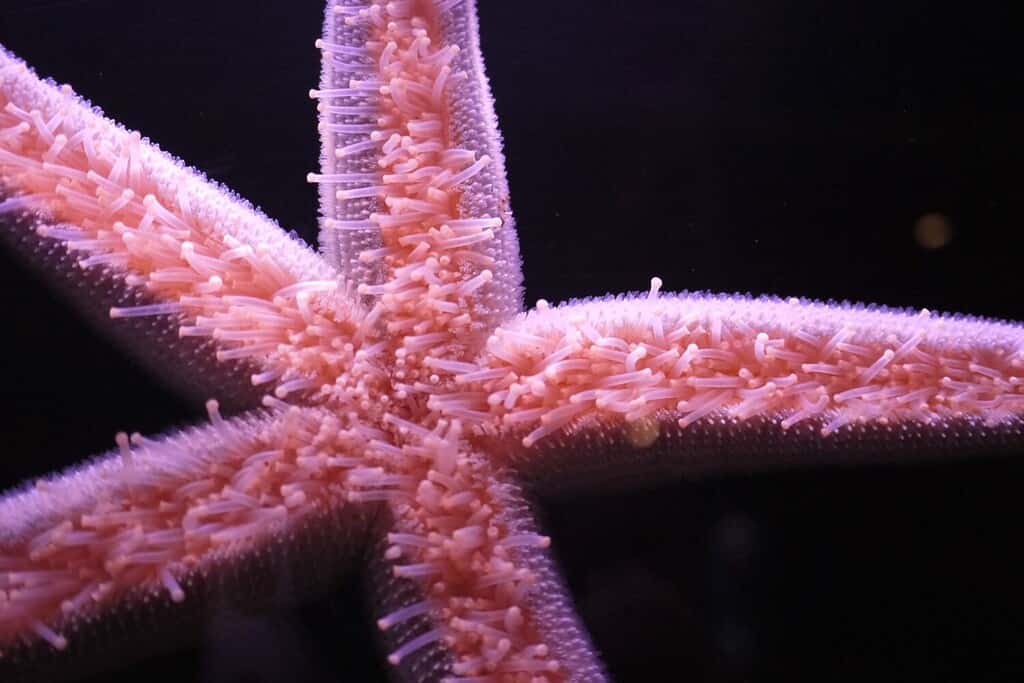
Among the detritivores of the world, sea stars are some of the most “popular” thanks to their beauty.
©LifeisticAC/Shutterstock.com
Technically, detritivores are among the consumers of the ecosystem. However, they feed on decaying materials. Sometimes referred to as decomposers, these detritivores are the living organisms that eat decomposing animals and plant matter. These are the “cleaners” in the ecosystem, consuming the waste of both consumers and producers. Decomposers aid the process of decomposition.
Examples of detritivores include millipedes, sea stars, fiddler crabs, earthworms, dung flies, woodlice, slugs, sea cucumbers, isopods, some species of butterflies and moths.
It should be noted that not all decomposers are fully detritivores. Some decomposers consume decaying materials – such as fungi – but live by absorbing and metabolizing at a molecular scale instead of through ingestion of discrete lumps of matter. Scavengers like vultures and hyenas are not classed as detritivores because they generally consume large quantities of organic material.
Decomposers live on any type of soil with some kind of organic component and are absolutely essential to the survival of ecosystems.
Heterotrophs

Quokkas are adorable little marsupials from Australia. They are among the 95% of the world’s population of heterotrophs or “consumers.”
©Grakhantsev Nikolai/Shutterstock.com
Consumers are known as Heterotrophs. The term means “other feeders”. Consumers are the living organisms that require more complex diets that involve plants and/or animals. These may be herbivores, carnivores, or omnivores. Approximately 95% of the world’s living creatures are, in fact, heterotrophs. Heterotrophs bodies are designed to take full advantage of all energy taken from food, unlike plants which fix carbon.
Examples of heterotrophs include humans, bears, lions, dogs, birds, sheep, cows, deer, rabbits, fish, snakes, turtles. Basically, animals – whether mammal, reptile, amphibian, arthropod, bird, or fish – make up this category of biotic factor.
What Does Abiotic Mean?
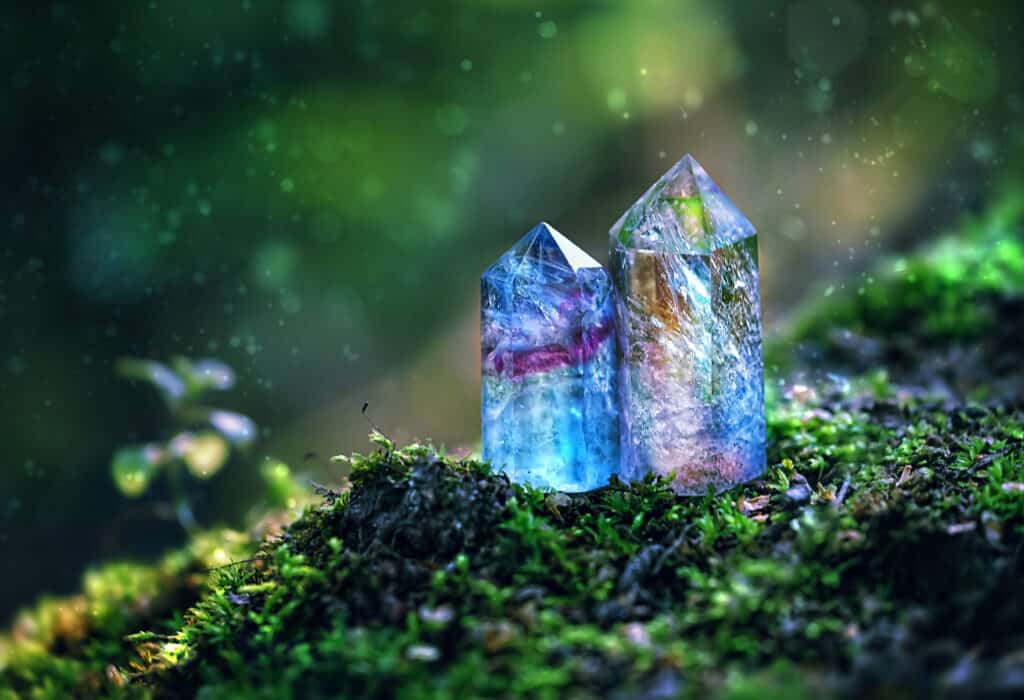
Minerals, crystals, and other nonliving elements that impact the environment in which they exist are abiotic factors.
©ju_see/Shutterstock.com
The prefix “a” means “without” or “void of.” In this case, it means “void of life” or “nonliving.” The term abiotic refers to nonliving but physical and chemical elements in an ecosystem. Resources in an ecosystem that affects others and are living are biotic factors. Nonliving factors may also affect the ecosystem through various forms of impact. For example, sunlight is a nonliving factor that impacts plants, animals, and insects. It is nonliving yet critical for life in an ecosystem.
Abiotic resources are obtained, in most cases, from the atmosphere (air and sky), hydrosphere (water), and lithosphere (earth and soil). Additional examples of abiotic factors include water and precipitation, minerals, and soil. These all impact the ecosystem without being living organisms. The type of abiotic factor present will be determined by the type of ecosystem. For example, abiotic components in a terrestrial (earth-bound) ecosystem will involve air, temperature, humidity, altitude, pH levels, weather systems, and water. In an aquatic (water-bound) ecosystem, oxygen levels of the water replaces air, water salinity, water flow rate, depth and temperature of the water all factor in the sustainability of livability of the ecosystem.
Types of Abiotic Factors
Abiotic factors could simply be described as environmental factors. Three basic categories may be ascribed to abiotic factors: edaphic, climatic, and social.
Climatic

Elements like weather and temperature are abiotic factors in the climatic category.
©Marcello Sgarlato/Shutterstock.com
Abiotic components such as sunlight, water, wind, temperature, humidity, climate, and pH levels are considered climatic abiotic factors for terrestrial organisms. Sound waves, tides, water clarity, sunlight exposure, and pressure are some of the climatic abiotic components for aquatic organisms. These are provided to plants and other organisms through means that they can take full or partial advantage of for sustenance or reproduction.
Edaphic
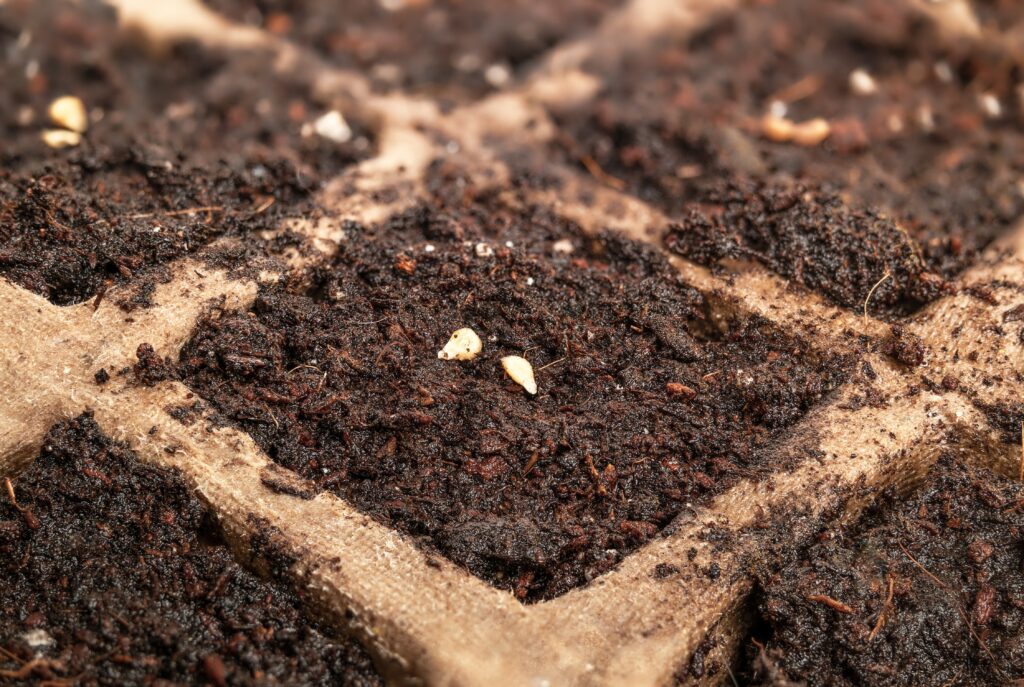
Soil is an abiotic factor that fits into the edaphic category.
©sophiecat/Shutterstock.com
Meaning “floor” from the Greek word edaphos, edaphic abiotic factors relate to soil, mineral, and geographical components of the ecosystem. Topography components such as elevation, valleys, depressions, slopes, mountains, craters and the like contribute to the ecosystem. Soil characteristics and available minerals also do, including through the structure, texture, and composition of soil. The density of available minerals or types of minerals impact organisms both directly and indirectly.
Social
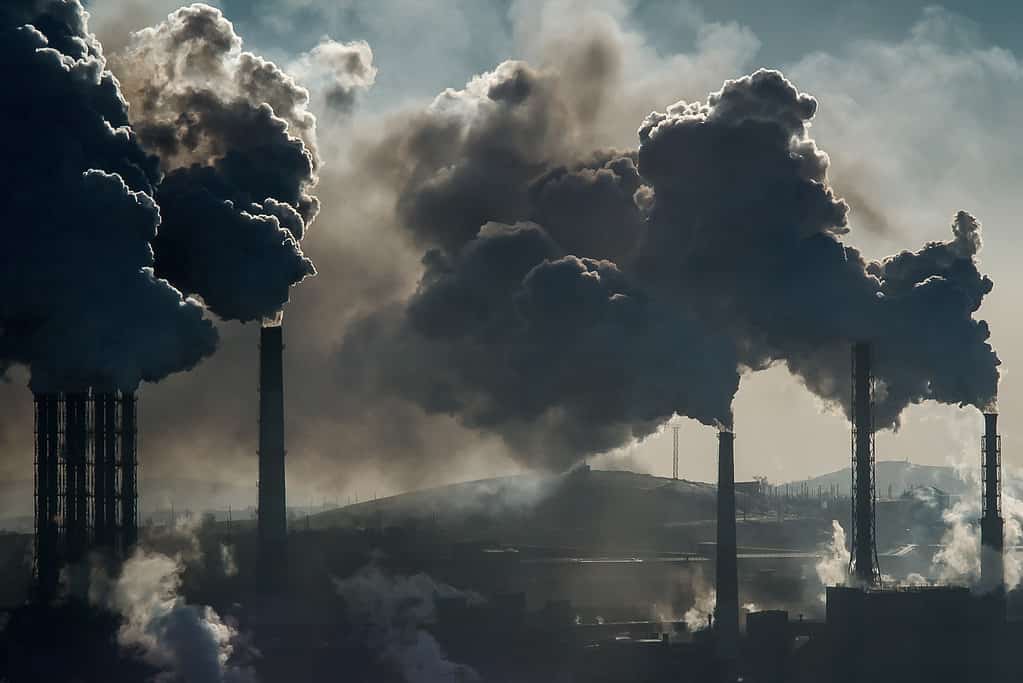
Fossil fuels are a major contributor to pollution and a major social abiotic factor.
©iStock.com/Максим Шмаков
Pertaining to human activity primarily, social abiotic factors also impact an ecosystem. This is when resources, such as coal, quartz, or iron ore are mined. Pollution, deforestation, dam building, even farming all impact ecosystems around them. Typically, most of the human activity factors are on a larger scale than merely the singular small ecosystem near the given mine or farm, but rather have a much larger effect on the system as a whole, sometimes impacting the entire biome.
Relevance of the Biotic vs. Abiotic
Spanning the entire biosphere (regions of the earth wherein organisms live), both biotic and abiotic factors make up ecosystems. These factors bear relevance for both the ecosystem as a whole, a given species of lifeform, or individual lifeforms within the ecosystems. Disease is a biotic factor that impacts the survival of individual organisms and communities in which they live, for example. Temperature has the same kind of relevance. The entire community is impacted when temperatures dramatically change beyond the standard boundaries for a region, for example, while individuals specifically may not survive the dramatic changes. (Think of severe winter storms in the Southeastern United States where standard heat is unavailable for all individuals.)
Some biotic and abiotic factors create more of an impact than others, of course. The factors combine to create the system, however, which ultimately is what is defined as the ecosystem. This makes both biotic and abiotic factors relevant to each other in significant ways.
Relevance Examples of Abiotic vs. Biotic Factors

Sunlight is an abiotic factor that dramatically impacts the entire world. Without this, few plants could exist, and therefore mammalian life would cease to exist.
©Viacheslav Rubel/Shutterstock.com
The relevance of these factors comes through their interactions with each other. The correct factors of both kinds must be in balance with one another for the ecosystem to survive long term. This is, for example, why resources such as coal, minerals, and clean water may run out easily for a given community but be in abundance for another. The size of the ecosystem must be in balance with each other – abiotic vs. biotic resources.
Water, sunlight, soil minerals, and carbon dioxide are the components needed for plants to grow and thrive. These factors are abiotic. Plants, the biotic factors, need nourishment from sunlight and soil minerals and water for photosynthesis. When the plants and these abiotic resources interact in balance with each other, the nonliving components are plentiful for the living organisms.
Additionally, abiotic vs. biotic interactions also include the patterns of seasonality and the climate. Temperatures, humidity, weather systems, and pollution affecting seasonal effects all impact the ecosystem through direct or indirect interactions.
The far north ecosystem of Canada, for example, has severe winters with lots of snow and extremely cold temperatures. Some animals have adapted to this ecosystem by growing thick fun in shades that blend in with the snow during winter months. Arctic foxes, arctic hares, and others have made this adaptation. Hummingbirds, however, would not survive a winter in the region – they have not made these adaptations.
Wrapping It Up
The easiest way to consider the differences between abiotic vs. biotic factors is that one is based in non-living elements and affects in the world (abiotic) or “without-life” elements. The other is based in living organisms or “with life” creatures and organisms (biotic).
If you can remember “bio” means “life” and “a” means “without”, you should be able to know the differences quite easily.
Thank you for reading! Have some feedback for us? Contact the AZ Animals editorial team.

